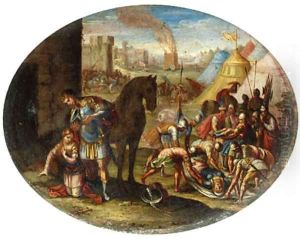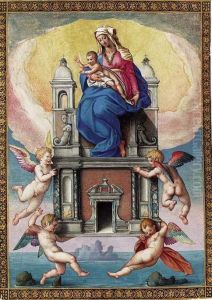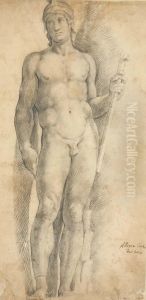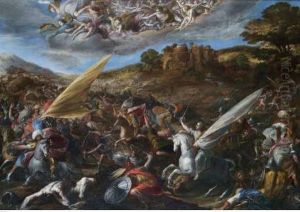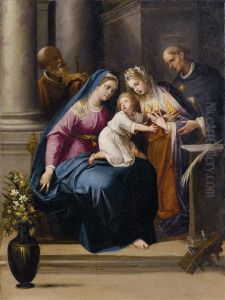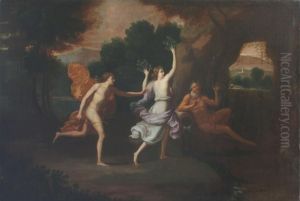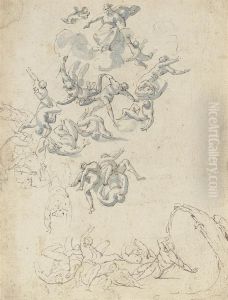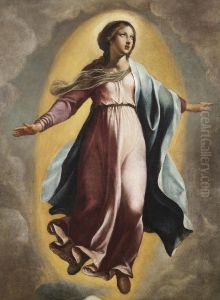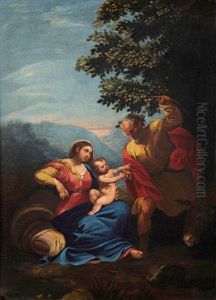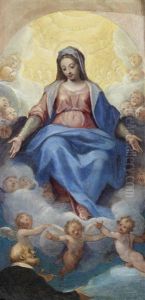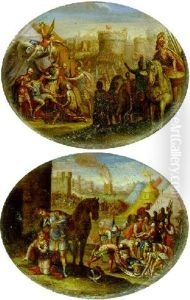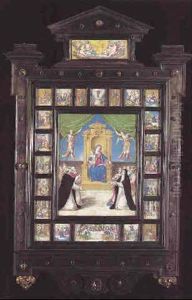Flaminio Allegrini Paintings
Flaminio Allegrini was an Italian painter of the Baroque period, born in 1587 in Rome, Italy. His artistic journey is intertwined with the rich tapestry of Baroque art that characterised the Italian art scene during the 17th century. Although not as widely recognized as some of his contemporaries like Caravaggio or Bernini, Allegrini made significant contributions to the development of Baroque painting, particularly in the realm of fresco decoration.
Allegrini's work is notable for its dynamic compositions, vibrant use of color, and the emotional intensity of the figures he depicted. He was deeply influenced by the dramatic chiaroscuro and emotional expressiveness of Caravaggio, as well as the classical harmony found in the works of the Carracci family. These influences are evident in his religious and mythological scenes, which often featured dramatic lighting effects and a strong sense of movement.
Throughout his career, Allegrini worked on several important commissions in Rome and other Italian cities. He was particularly active in decorating chapels and palaces with his elaborate frescoes. One of his most significant contributions was to the decoration of the Palazzo Pamphilj in Piazza Navona, Rome, where his frescoes are among the highlights of the palazzo’s interior. Despite the grandeur of some of his projects, many of Allegrini's works have been lost or remain unidentified, which has contributed to his relative obscurity compared to other artists of his time.
Allegrini was also known for his work as a restorer and was involved in the restoration of older frescoes, which was a common practice among artists of the Baroque period. This aspect of his career underscores the respect he had for the tradition within which he worked, and his desire to preserve the artistic heritage of Italy.
Flaminio Allegrini died in 1663, leaving behind a legacy that, while not as celebrated as some of his peers, represents an important link in the chain of Baroque art in Italy. His works continue to be studied by art historians and appreciated by art lovers for their contribution to the development of Italian Baroque painting.
